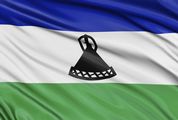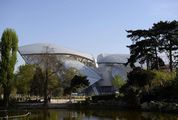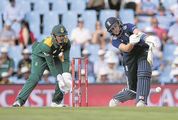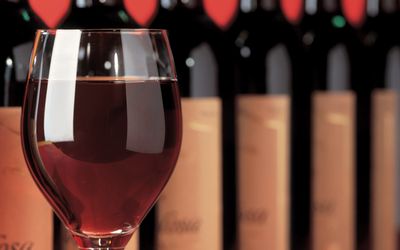UNTIL the early 1960s, the fine wine consumers of the world were largely Old World-based and drank only Old World appellations. The lion’s share of the trade was French, with the bulk of the upmarket red wine business sourced through Bordeaux. While the region itself produces considerably more wine than the whole of SA, there are fewer than 100 top classified estates, but thousands of smaller chateaux to supply claret consumers.
A whole segment of upper middle-class society had a simple enough wine regime of Champagne, white Burgundy, red Bordeaux and Port.
A handful of long-established wine merchants dominated this trade. Many of them had begun business as blenders and bottlers, sourcing barrels directly from the growers and, with greater and lesser fidelity, packaging the bulk wines under the chateaux names deemed most fashionable. Their records show "recipes" for "assembling" some of Bordeaux’s most illustrious estate wines.
Unsurprisingly, by the mid-20th century many of the leading chateaux had abandoned bulk sales. "Bottled on the property" became an implicit guarantee of authenticity of origin.
With a consistent balance between supply and demand, prices remained stable and tended to favour consumers rather than producers. In the 1970s Johannesburg’s Civil Service Wine Store (with premises a block away from Anglo American) offered classed growths from R3 per bottle, and 20-year-old first growths from R20.
To put that in context, R1.30 to R2 would buy you a bottle of Nederburg, Zonnebloem, Rustenberg or Bellingham.
No one seriously contemplated drinking a local red wine fewer than five years old — or 10 years in the case of a half-decent chateau-bottled Bordeaux.
In fairness, in those days the wines needed more time to mature. Cooler vintages and the risk of late summer rain (in Bordeaux) or early winter rain (in the Cape) meant earlier harvests, and in turn lower alcohols and occasionally greener flavours — some of which melded into more earthy, mushroomy notes with bottle age. Consumers today are disinclined to cellar their purchases for anything like this period of time, and most producers have neither the capital, the storage nor the inclination to carry older stocks.
An exception is Morgenster, whose Grand Vin is made in the Bordeaux style by Henry Kotze under the, admittedly distant, supervision of Pierre Lurton and Pierre-Olivier Clouet from Chateau Cheval Blanc.
Last year, the estate hosted a vertical of its wines, going back to 2001, all still available on its aged-release programme.
My favourites were the 2001, the 2003 and the 2005, the first two of which were Cabernet (Sauvignon and Franc) dominated.
A few months later, Nederburg presented its 2012 II Centuries Cabernet, which had just bagged a Veritas double gold. All going according to plan, it will be available this year — when it will probably still be impossibly youthful. Nederburg’s problem, which is the same for all serious red wine producers in the Cape, is how to persuade consumers that it is worth buying the wine now and ageing it for another decade or two. The solution was to show it alongside a number of older vintages going back to the 1960s.
Several — particularly the 1966 and 1975 — were classics that would have done any Bordeaux property proud. The implicit promise — notwithstanding different fruit sources, different clones, vastly improved virus condition and different climatic circumstances — is that the 2012 has the same potential.
While the 2012 was indeed my highest scoring post-1970s Nederburg, only time will tell.
That is not the kind of accountability likely to comfort any except the most adventurous speculators. What else are we to do, other than to stock up on estate-aged wines such as the Morgenster? A Lolita (or toy boy, to be completely PC) is only mildly diverting. Wine drinkers who want the glory of a truly mature red must be ready to make a more substantial commitment.



















Change: 2.48%
Change: 2.53%
Change: 2.08%
Change: 1.97%
Change: 5.33%
Data supplied by Profile Data
Change: 0.00%
Change: 0.00%
Change: 2.48%
Change: 0.00%
Change: 0.00%
Data supplied by Profile Data
Change: 0.44%
Change: 0.11%
Change: -0.76%
Change: -0.92%
Change: -0.23%
Data supplied by Profile Data
Change: 0.00%
Change: 0.00%
Change: 0.00%
Change: 0.00%
Change: 0.00%
Data supplied by Profile Data